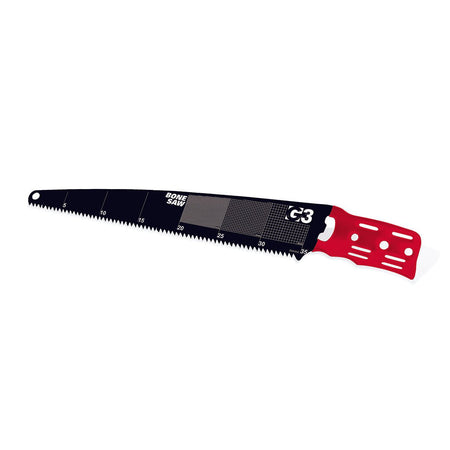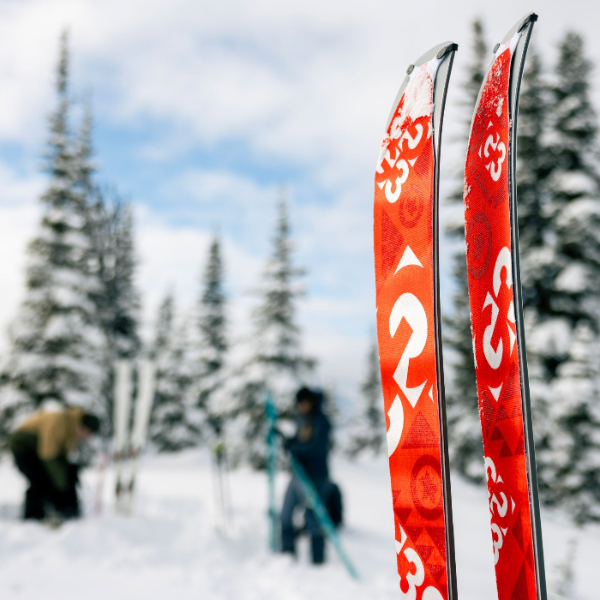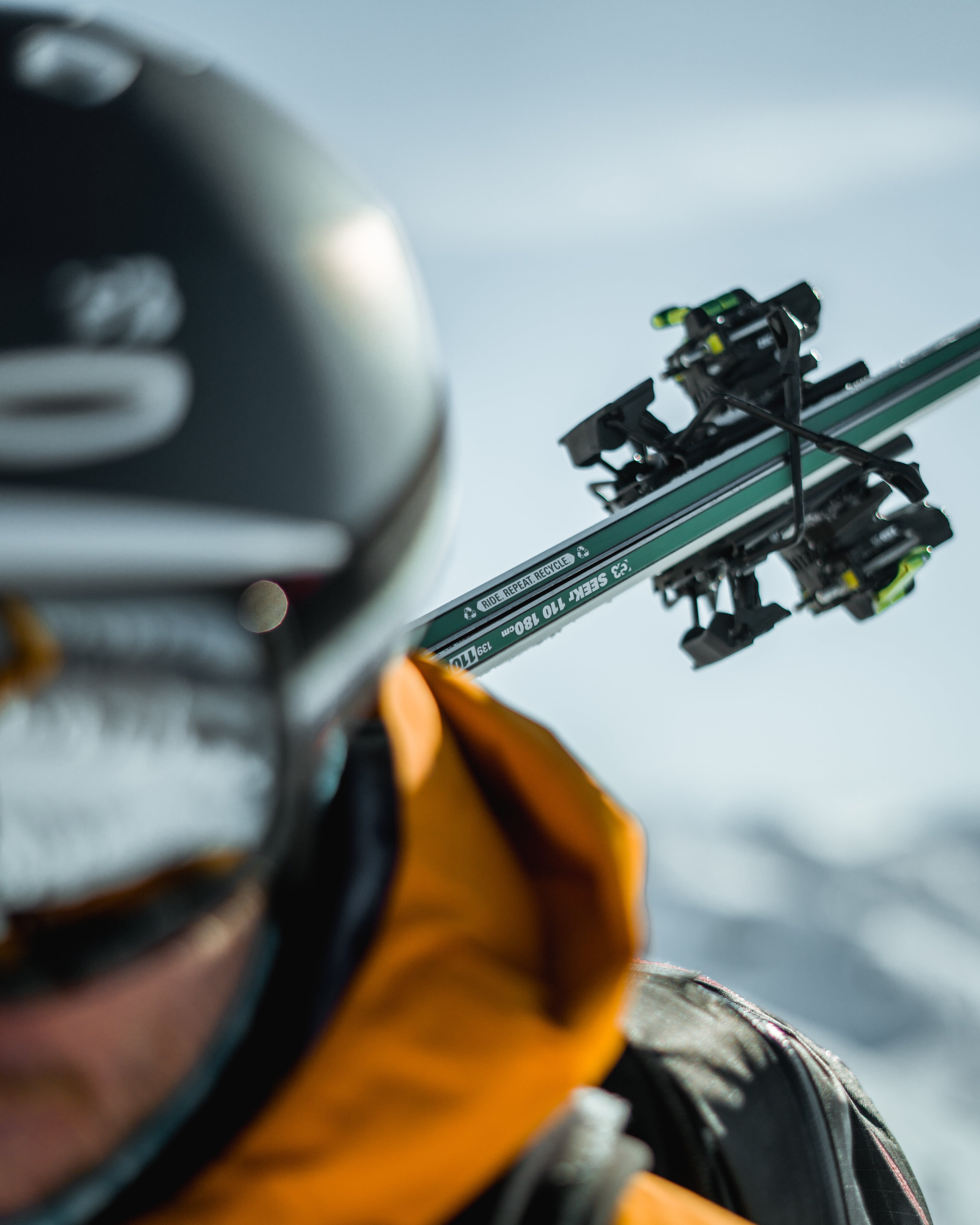
IMAGE BY DELANEY ZAYAC. SMALL PROPAGATION, NO BURIAL, NO INJURY
A new or persistent weak layer lurks on south and east-facing slopes in your local backcountry haunts. You’re concerned. How reactive is it? What’ll happen once a fracture is initiated on this weak layer? Specifically, what is the propagation propensity of the slab and weak layer combination? Will it propagate only a short distance, or will it continue across the slope and produce a large avalanche?
JEFF BURKE FROM JACKSON HOLE SKI PATROL GIVES US A TUTORIAL ABOUT THE PROPAGATION SAW TEST...
Having a good grasp of snow stability is a virtue among winter backcountry travelers. Making field observations and “testing” those obs is a big part of determining snow stability. Several standard field tests help skiers and climbers better gauge stability: compression test, stuff block test, Rutschblock test (see G3’s Rutschblock chord), and the new Extended Compression Test (ECT), which is more specifically designed to investigate initiation and propagation propensity in the field. New to the list of tests is the Propagation Saw Test (PST). “We designed the PST both as a research tool and a practical field test,” says Dave Gauthier, PhD (civil engineering at Univ. of Calgary) and co-author of the PST Paper with Bruce Jamieson, “to assess the ‘propagation propensity’ of slabs and weak layers in the field. People [are] starting to think of fracture initiation and propagation separately, and we’re starting to realize the limitations on more traditional stability tests. The PST wasn’t meant to replace existing tests, it was meant to zoom in on the propagation part of avalanche release.”
What sets the PST apart is that it doesn’t rely on fracture initiation by surface loading (weight or pressure put on test column by tester) to quantify results, so the test can be done at any depth within the snowpack. The only limit is how much are you willing to dig. Also, the main point to be made regarding the PST is that is not a ‘stability test’; it’s not telling you how easy it could be to trigger the weaker layer. “But if you’re sitting in a pit collecting information to make a decision about skiing a slope or closing a highway,” says Gauthier, “and you’re asking yourself: what will happen [if] I trigger this? Will it propagate? The PST is a great tool to use to get an answer.”
Jim Woodmencey, certified AAA avalanche instructor and meteorologist from Jackson, WY, thinks the PST is a great addition to backcountry field tests. “I found that adding this test (along with the ECT) to my own personal tool bag when I’m evaluating snow has added very useful information. In a teaching environment—at level two and three—it is also very useful. I like the graphic nature of the result when you get full propagation. Great as a demonstration to students.”
But it might be too much for beginners. “For Level One classes, I still like teaching some of the more basic tests to them first,” says Woodmencey. “To add two more tests to a beginner’s bag of tricks might be a bit overwhelming, and since the sample sizes and geometry of the columns for the ECT and PST are so much different, it could add some confusion.”
To make a test column, isolate a column 30cm wide across the slope and one meter long downslope. (Note: if the vertical slab is less than one meter, the downslope length should stay one meter. If the vertical slab is greater than one meter, meaning your weak layer is more than a meter down from the snow surface, the downslope length should be equal to, or greater than the vertical length of the slab.) After the column is isolated, insert a Bonesaw (non-serrated edge first) completely into the weak layer. Quickly, drag the saw through the weak layer toward the upslope end of the column. At some point, the weak layer fracture will start propagating rapidly ahead of the saw. Stop cutting, and keep the saw in place. Try to watch the very rapidly propagating fracture. One of three things will happen:
- Fracture will run all the way up the column to the upslope end and the slab will be completely detached.
- Fracture will propagate a short distance and stop when the slab fractures (like a crown).
- Fracture will propagate a short distance and seem to stop for no good reason.
There are two important observations when interpreting the test results. Did you cut less than half or more than half when propagation started? And, did the propagation span across the entire column, or did it arrest within the column?
For the most part, qualifying results is simple. If less than half of the column was cut when propagation shot out in front of the saw blade (and the fracture propagated to the end of the isolated column without arresting), fractures—once initiated—were likely to cause avalanches and/or whumpfing, meaning Propagation Likely (if triggered). Conversely, if more than half of the test column was cut when propagation started (or propagation arrested at slab fractures, or for any other reason before reaching the end of the column), weak layers were unlikely to propagate once triggered, meaning Propagation Unlikely (if triggered).
Let’s say you isolate a column, cut the weak layer, and before the blade reaches 50 cm, the propagation races ahead to the end of the column and becomes completely detached. Qualify that result as Propagation Likely (if triggered). And the ‘if triggered’ part means, that if a particular weak layer is triggered by a skier or boarder, then the propagation propensity is likely and you may want to avoid that slope and others of similar elevation and aspect.
Because snow is fickle, there is a caveat. In 28% of the test’s dataset of “propagation unlikely”, Gautheir found “false stable” predictions, which usually occurred in softer, thinner slabs. According to Gauthier’s paper, “In most of these cases the compression test and Rutschblock test predicted the unstable conditions correctly. Therefore, it’s very important to be cautious when interpreting the propagation saw test results in thin and soft slabs, especially soon after the weak layer is buried and the layer is just becoming active.”
“The key with using the PST,” maintains Gauthier, “is that it tells you about propagation propensity, but you still need other tests and experience to decide how easily you might trigger something.” Woodmencey agrees. “To the seasoned backcountry skier or professional avalanche forecaster who has lots of field time, and has already dug a lot of pits over the years—and who also has a good feel for all the other tests—this one is a winner.”

BONESAW
The G3 Bonesaw is streamlined, packable, lightweight, easily extendable and tough enough to cut through bone, wood, and ice. It features slots for easy attachment...
$93.00 Shop BONESAW



